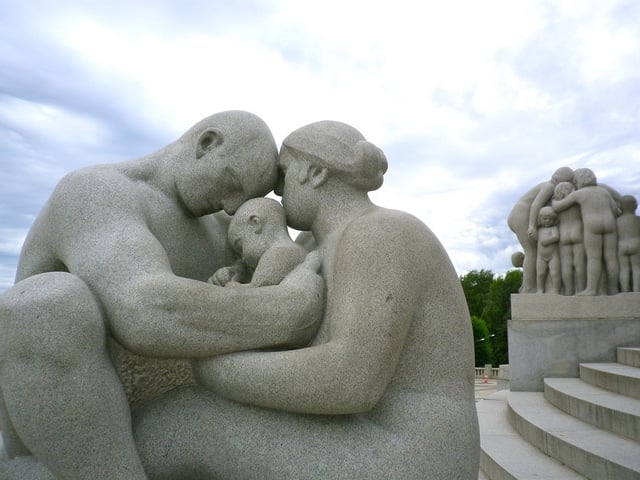
by Ecoziva (Brazil) | Apr 29, 2016 | 2016, Brazil, Death and Dying, Environment, Friendship, Life, Relationships, South America, World Motherhood

I believe that everyone, in some way or another, has a second (or more) set of “parents”. This is a broad definition of parents I am using here – they may be people who cared for you when your biological parents were having problems, such as grandparents or aunts and uncles, or even godparents as is the custom in some places. They could be people who took you to the movies or to fancy restaurants if the money in your family was tight. They could be people close to you whom to others might seem commonplace but to you were heroes. They could be teachers, formally or not. The common characteristic among these people is that they were role models for you and had a big (positive) impact on your life in one or more ways.
I was lucky enough to have several such wonderful people in my life during childhood and adolescence, but one couple stands out.
(more…)
Eco, from the greek oikos means home; Ziva has many meanings and roots, including Hebrew (brilliance, light), Slovenian (goddess of life) and Sanskrit (blessing). In Brazil, where EcoZiva has lived for most of her life, giving birth is often termed “giving the light”; thus, she thought, a mother is “home to light” during the nine months of pregnancy, and so the penname EcoZiva came to be for World Moms Blog.
Born in the USA in a multi-ethnic extended family, EcoZiva is married and the mother of two boys (aged 12 and three) and a five-year-old girl and a three yearboy. She is trained as a biologist and presently an university researcher/professor, but also a volunteer at the local environmental movement.
More Posts

by Michelle Pannell | Apr 4, 2016 | 2016, Economy, Environment, Europe, Global Goals, UK, World Motherhood
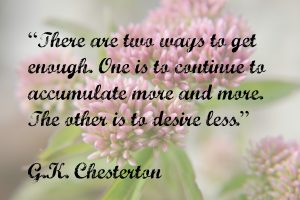 It’s now April and without really meaning to, I’ve found that in the first three months of the year I’ve not bought myself any clothes or shoes. Now this might seem like a small thing to many people, but sadly where I live in the UK it is very common place to constantly be buying new things – clothes, jewellery, items for the house, cars, gadgets and frankly any sort of status symbol.
It’s now April and without really meaning to, I’ve found that in the first three months of the year I’ve not bought myself any clothes or shoes. Now this might seem like a small thing to many people, but sadly where I live in the UK it is very common place to constantly be buying new things – clothes, jewellery, items for the house, cars, gadgets and frankly any sort of status symbol.
Over the last decade I’ve become more and more concerned about the disposable world we live in, the one where we teach our children that as soon as a sock has a hole in it, you throw it away and buy new ones. Of course some of the problem is that in places like England socks can be bought very cheaply now, perhaps five pairs for just £2.00. But at what expense are we buying those socks? How much did the worker in a far off country earn whilst making those socks? A good living wage? Almost certainly not.
Every action we take when it comes to buying ‘things’ or accumulating ‘stuff’ has an impact, not only on those people who are actually involved in the production phase but also on the cost of delivering the stuff from one country to another and delivering it to the end customer. Almost everything we buy has a carbon footprint. I can’t even start to pretend that I am any kind of expert in this area, but I am slowly realising that it is not enough to just be an advocate for an end to extreme poverty. If I want to see that happen I have to also be an advocate for an end to the use of fossil fuels.
A few months ago, Amnesty International and Greenpeace issued a joint statement to the 195 countries meeting together to discuss climate change at the COP21 Sustainable Innovation Forum in Paris. The statement linked global temperature rises with human rights. They stated that an additional 600 million people could face hunger by 2080 due to climate change. What a terrifying thought and completely in opposition to where the situation should be heading.
Thankfully a few days later, the world’s governments signed an agreement to reduce net carbon emissions to 0% by 2050, thus signalling an end to the fossil fuel age. Of course change is not as easy as some officials signing a treaty: there is much hard work to be done and Joe Average, like you and I, has to play a part. So I beg you, starting now, will you please consider if you really need that new blender? Do you have to trade in your BBQ for the self-cleaning one that is just one step up? Or could your old one last you a few more years?
I’m certainly adopting the attitude of ‘take me as I am’ this year and if someone comes round my house and feels that my TV is old fashioned and perhaps a little squeaky, well so be it. We won’t be buying a new one until this one really is past its best and can’t be fixed. It’s far too easy to get caught up in the competitive rat race, the one that says you must have a big smart car, holidays abroad and a well thought-out wardrobe, to be seen as successful.
In contrast, some of the most successful people I have known over the years have been those with no great dress sense, who have had a messy house and a clapped-out old banger of a car. Success is about the person, not their belongings. It is the mother whose four adult children are all thriving and giving back to society in various ways. It is the retired man who goes out and works with street kids to ensure that they stay away from drugs. It is the passer-by in the street who smiles at everyone and takes time to talk to those she knows are lonely.
Those are the people I want to celebrate and to join. I don’t need lots of new things, I just need a heart full of love and by the grace of God I can share that with everyone I meet. Will you join me?
What role do material things play in your life? Are you concerned for the world your children are growing up in?
This is an original post written by blogger Michelle Pannell for World Moms Blog. Photo credit to the author.

Michelle’s tales of everyday life and imperfect parenting of a 13-year-old boy and 9-year-old twin girls and her positive Christian outlook on life have made her name known in the UK parenting blogosphere. Her blog, Mummy from the Heart, has struck a chord with and is read by thousands of women across the world.
Michelle loves life and enjoys keeping it simple. Time with her family, friends and God are what make her happiest, along with a spot of blogging and tweeting, too! Michelle readily left behind the corporate arena but draws on her 25 years of career experience from the fields of hotel, recruitment and HR management in her current voluntary roles at a school, Christian conference centre, night shelter and food bank.
As a ONE ambassador, in 2012 Michelle was selected to travel on a delegation to Ethiopia with the organisation to report on global poverty and health. Then in 2014 she was invited to Washington, DC, where she attended the AYA Summit for girls and women worldwide. When asked about her ambassadorship with the ONE Campaign, she stated, "I feel humbled to be able to act as an advocate and campaigner for those living in poverty."
More Posts - Website
Follow Me:






by Alison Fraser | Mar 29, 2016 | 2016, Canada, Cultural Differences, Environment, Nature, North America
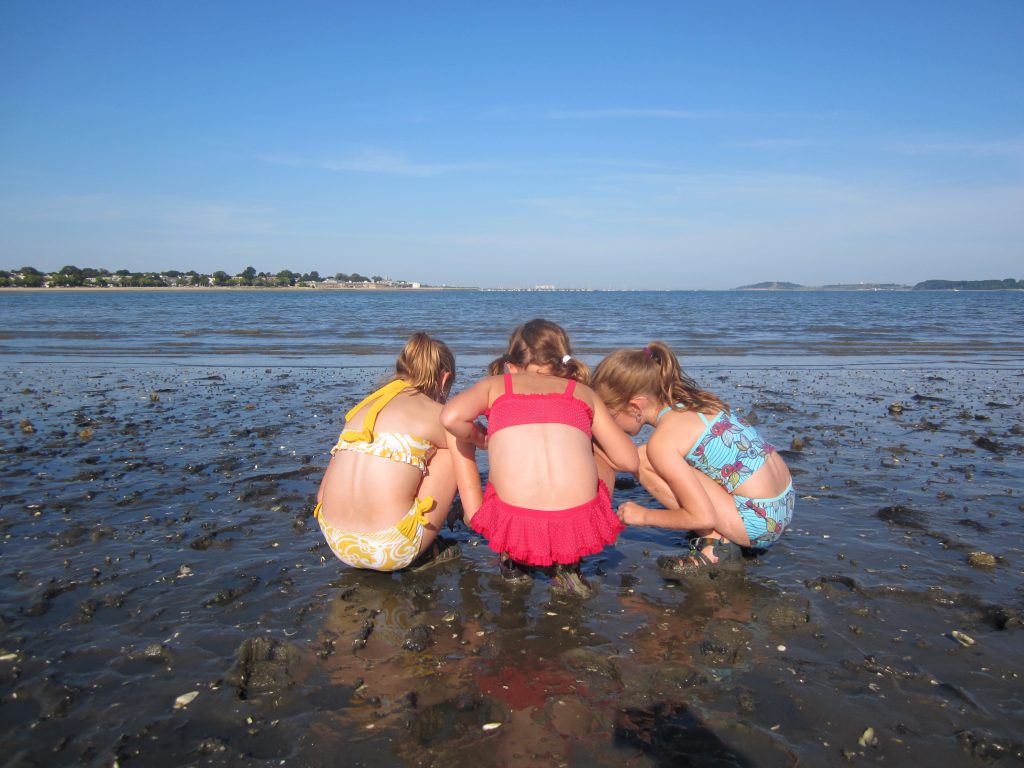 This week, as I was catching up on news headlines, a notification appeared announcing the 80th birthday of David Suzuki. David Suzuki is one of the most recognized and respected environmental scientists and activists of our time. And, he is Canadian – something I am very proud of. But when I shared this tidbit of information with my daughters, they didn’t share my enthusiasm. What I soon realized is that his name meant very little to them. How did this happen?
This week, as I was catching up on news headlines, a notification appeared announcing the 80th birthday of David Suzuki. David Suzuki is one of the most recognized and respected environmental scientists and activists of our time. And, he is Canadian – something I am very proud of. But when I shared this tidbit of information with my daughters, they didn’t share my enthusiasm. What I soon realized is that his name meant very little to them. How did this happen?
I remember being a child and thinking of David Suzuki as a homegrown hero. I would eventually study environmental science in university and graduate school, and then work as an environmental consultant. I think much of my career path was shaped by the Suzuki movement in Canada.
The very first fundraiser that I ever organized as a child was to save polar bears. Why were my daughters not feeling the same way? Sure, they love and respect nature, and spend their summer days exploring outdoors from dawn to dusk, but they were not nearly as passionate about environmental issues as I was when I was their age.
In response to this realization, I made a trip to our local bookstore and purchased a children’s book on climate change written by David Suzuki, himself. We then proceeded to hold mini-discussions within our family on various environmental issues. I have to admit, that I found it incredibly difficult. Climate change is scary. When you hear that a 2 degree Celsius change, in the global average temperature, can have devastating effects on the world in which we live, it underscores just how delicately balanced the earth really is.
Explaining this to young children is just as delicately balanced. How do you ensure they understand the severity of the issue, without making the situation terrifying and seemingly hopeless?
Through our discussions, my girls began to not only learn about the science behind climate change, but also about what they could do to limit their impact on the environment. They are becoming more and more passionate about environmental issues by the day. They now have countless ideas on how they can “help the environment”. One of their big concerns is parents idling cars in school pick-up zones. They plan on approaching their school to come up with a ban on idling, thereby reducing greenhouse gas (GHG) emissions. It may be a small step, but it is a start. And, it allows school-aged children to not only have a direct part in reducing GHG emissions but also provides an avenue in which to have further climate change discussions at home, at school and within the community. I truly think that they understand the severity of climate change now, but their passion and commitment to change the future far outweighs their fear.
This all caused me to wonder how others, around the world, address the issue of climate change with their children.
Are there any resources or approaches that you use that others would benefit from knowing about?
This is an original post by Alison Fraser who is Founder and Director of Mom2Mom Africa.
Alison Fraser is the mother of three young girls ranging in age from 5 to 9 years old. She lives with her family in Cambridge, Ontario, Canada. Alison works as an Environmental Toxicologist with a human environment consulting company and is an active member of the Society of Environmental Toxicology and Chemistry (SETAC). She is also the founder and director of the Canadian Not for Profit Organization, Mom2Mom Africa, which serves to fund the school fees of children and young women in rural Tanzania. Recently recognized and awarded a "Women of Waterloo Region" award, Alison is very involved in charitable events within her community including Christmas Toy and School Backpack Drives for the local foodbank.
More Posts - Website
Follow Me:



by ThinkSayBe | Oct 12, 2015 | 2015, Awareness, Being Thankful, Economy, Environment, Gratefulness, Helping, Human Rights, Humanitarian, Life, Natural Disaster, Nature, News, North America, Social Equality, Social Good, ThinkSayBe, Tragedy, Uncategorized, USA, Water, World Events, World Motherhood
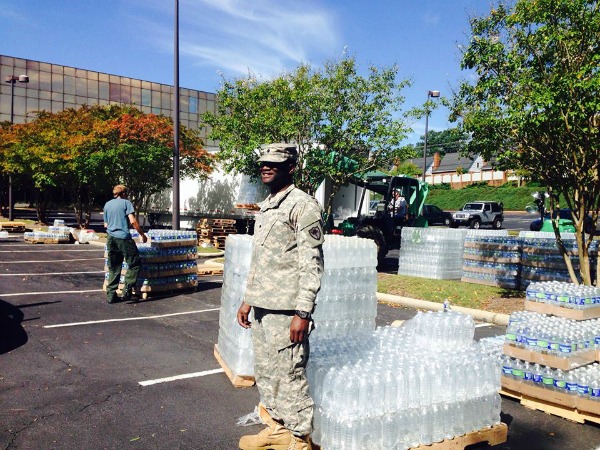
Last week, South Carolina experienced the worst flooding is has seen in 1,000 years. World Mom, Sophia, shares her search for clean water after the storm last week…
Today the National Guard had two posts at which troopers were giving out clean water bottles by the case. As I prepared to go get some of this water, I thought of the safest, most effective and expeditious way of getting through the line of people waiting.
Would there be a truck at which troopers would be handing out the cases? Would there just be a group of us standing there with no adhered-to order, or would there be a line? How could I carry more than one case back to my car? I surely couldn’t get to the front of the line (or group) more than once… Maybe I should take the stroller, and put as many cases of water on it as I could take. (more…)
I am a mom amongst some other titles life has fortunately given me. I love photography & the reward of someone being really happy about a photo I took of her/him. I work, I study, I try to pay attention to life. I like writing. I don't understand many things...especially why humans treat each other & other living & inanimate things so vilely sometimes. I like to be an idealist, but when most fails, I do my best to not be a pessimist: Life itself is entirely too beautiful, amazing & inspiring to forget that it is!
More Posts
Follow Me:


by Ecoziva (Brazil) | May 1, 2015 | 2015, Awareness, Brazil, Caring, Environment, Family, Home, Moving, World Motherhood
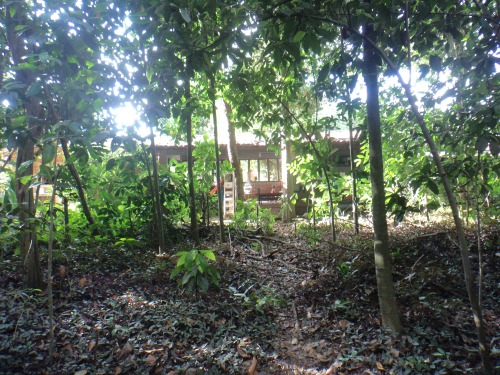
This is the Part 2 of a two part post. The first part is available here.
We are thinking about moving. Yesterday we visited two very nice houses at great prices and relatively close to where we live. I loved the first house in the sense that it has a practical, easy to clean design and would be great for the kids. However, there isn’t a single tree in the property! Also, it is completely exposed to neighbors and people in the street, which is something I do not like at all. The second house has lots of lovely trees, yet had an unpractical format that is not too child friendly. Among other things, it includes a high mezzanine that would be quite hard to keep the kids away from.
Basically, I would like to have the first house in the second house’s lot, which would be by the forest we live next to now!
Nevertheless, even though neither is perfect, either one of them would give us the chance to move and have a more organized, cozier home without undergoing the stress of home improvement projects. Plus, one of the advantages of moving – although it can also be a stress factor – is having a chance of reorganizing all of the stuff one has accumulated along the years and donating a bunch of items that are no longer necessary. Some even say that there are huge psychological benefits, as going through all that accumulated stuff can even stimulate the re-evaluation of an entire life and life style.
I believe the single greatest reason for staying, both for my husband and I, is the forest. I also like to think that living the way we do – with such close contact to the forest and all of its fauna and flora – will give our children a different perspective in life.
In his excellent book, Space and Place: The Perspective of Experience, Chinese geographer Yi-Fu Tuan discusses how one’s home and its architecture influences the perceptions of and relationship with the environment, comparing the case of China and the USA.
Another thing that bothers me is that the new owners of our house might not “take care” of the forest as we do. Of course we only “look after” a tiny piece of the forest right behind our house, but some of the animals have almost become part of the family. For example, there is a sloth that our daughter has named Melissa…but also the tiny squirrel that makes its chirping sounds early every morning, the tegus that live in a hole in our backyard, plus the humming birds, chameleons, possums, agoutis, and so many others!
The sad truth is that surprisingly, many of our neighbors don’t care much about the forest. We often ask ourselves why they live here. They place high walls between the forest and their properties. Sometimes they illegally cut down the closest trees out of fear that they may topple over their houses (even though rarely a professional is summoned to check if there is truth in that fear), or they clear the bushes and smaller trees because they believe it will ward away snakes. More than once we have patiently talked to people about these issues only to be repelled off angrily in a menacing tone.
On the other hand, I also worry about the possibility of an unhealthy attachment to the house itself on my part. I don’t think it is healthy to be overly attached to any object. I recently saw how difficult it was for my mother to move out of her huge and decaying house, even though she was living completely alone, widowed for the second time (and now the difficulty to sell or do something about it). Similarly, my mother-in-law lives alone with her eldest son in an old eight bedroom house which almost everyone in the family is extremely resistant to sell due to their childhood memories and attachments.
Thus the question remains. Should we remodel our house and make the best of it? Should we take the “simple” path and just move? What have your experiences been with house remodeling and moving? Please share below!
This is part two of an original post to World Moms Blog by Ecoziva in Brazil.
Photo credit to the author.
Eco, from the greek oikos means home; Ziva has many meanings and roots, including Hebrew (brilliance, light), Slovenian (goddess of life) and Sanskrit (blessing). In Brazil, where EcoZiva has lived for most of her life, giving birth is often termed “giving the light”; thus, she thought, a mother is “home to light” during the nine months of pregnancy, and so the penname EcoZiva came to be for World Moms Blog.
Born in the USA in a multi-ethnic extended family, EcoZiva is married and the mother of two boys (aged 12 and three) and a five-year-old girl and a three yearboy. She is trained as a biologist and presently an university researcher/professor, but also a volunteer at the local environmental movement.
More Posts

by Ecoziva (Brazil) | Mar 26, 2015 | 2015, Awareness, Being Thankful, Brazil, Environment, Family, Gardening, Gratefulness, Home, Inspirational, Kids, Life, Life Balance, Marriage, Motherhood, Moving, Nature, Parenting, Relocating, Stress, Weather, World Motherhood
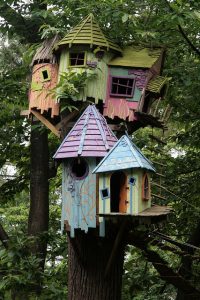 When we first married we lived in an apartment in the heart of a big metropolis. It was practical to live near everything we needed and be able to do all of our errands by foot or bus (in fact, we had no car and walked to work). However, we missed having green. We started looking for a house in a nice region on the outskirts of the metropolitan area, near a forest reservation.
When we first married we lived in an apartment in the heart of a big metropolis. It was practical to live near everything we needed and be able to do all of our errands by foot or bus (in fact, we had no car and walked to work). However, we missed having green. We started looking for a house in a nice region on the outskirts of the metropolitan area, near a forest reservation.
When we finally found a place we could afford to rent it wasn’t exactly your typical house. The owner had built two tiny guest houses in the back of a property he had initially planned to build a regular house in the front of later on; but that never happened.
On the upside we were living glued to a fragment of Atlantic rainforest and our son now had a huge garden to play in. On the downside, the house wasn’t exactly practical.
One of the guest houses had two rooms, a kitchen and a terrace. There we installed our son’s room and ours. However, the kitchen was so small it would only fit the fridge OR the stove, so we had to put the fridge in the second guesthouse and crossover all the time, sun or rain.
The second guesthouse, in turn, had a living room/terrace, one room (which became our library/office), the main bathroom and a pantry of sorts (we squeezed in the fridge instead). The roof had no lining, which wouldn’t be a problem if we didn’t have constant animal visitors coming in (lots of funny stories about that!).
Later on, when we were able to buy the our place, we decided to apply our limited funds to adapt the two guesthouses. An architect friend did his best to join them together into a single, more conventional house.
Our bedroom was expanded and incorporated the tiny kitchen and part of the terrace. A living room was built to join the two houses, which took the shape of a “J”. The main bathroom and former pantry gave place to the new kitchen. Part of the terrace became the laundry room. We lined the roof, installed mold-proof open wardrobes, and installed a large bathtub where our two other children were later to be born.
Nevertheless, all of this did not happen at one time. As I said, we had limited funds and every time these funds began to wane we had to stop.
At three different and stressful moments a lot of work was done in the house, including once, when during three very challenging months, we had to live at my mother-in-law’s.
Now, years later, we still live in a very unconventional house.
Besides the bedrooms, we never put in windowpanes or doors. The terrace/living room still opens completely into the forest – a curse and a blessing all at once! And even though our financial situation has improved considerably over the past few years, it has been four years since our last attempt at home improvement.
Aside from the occasional efforts to clean/fix the roof from the huge amount of leaves we get, we haven’t done much. Every time we think of all the stress involved we decide to postpone any kind of big project.
Despite everything, I love my house and its garden. I believe things will get better as our children grow older and we have more time and energy for housekeeping and improvement. My husband, on the other hand, thinks there is no way to make this house work and we should just move elsewhere, even though he also loves the closeness to the forest. The truth is he would like to live on a small farm, although I have safety concerns. Thus, every once in a while we go house or farm hunting.
Stay tuned! Part 2 coming soon…
How about you, what are your stories with house remodeling and moving? Please share below?
This is part 1 of a two part, original post to World Moms Blog from our contributor and mom of three in Brazil, Ecoziva.
The image used in this post is attributed to Karen Roe. It carries a Flickr Creative Commons attribution license.
Eco, from the greek oikos means home; Ziva has many meanings and roots, including Hebrew (brilliance, light), Slovenian (goddess of life) and Sanskrit (blessing). In Brazil, where EcoZiva has lived for most of her life, giving birth is often termed “giving the light”; thus, she thought, a mother is “home to light” during the nine months of pregnancy, and so the penname EcoZiva came to be for World Moms Blog.
Born in the USA in a multi-ethnic extended family, EcoZiva is married and the mother of two boys (aged 12 and three) and a five-year-old girl and a three yearboy. She is trained as a biologist and presently an university researcher/professor, but also a volunteer at the local environmental movement.
More Posts




 It’s now April and without really meaning to, I’ve found that in the first three months of the year I’ve not bought myself any clothes or shoes. Now this might seem like a small thing to many people, but sadly where I live in the UK it is very common place to constantly be buying new things – clothes, jewellery, items for the house, cars, gadgets and frankly any sort of status symbol.
It’s now April and without really meaning to, I’ve found that in the first three months of the year I’ve not bought myself any clothes or shoes. Now this might seem like a small thing to many people, but sadly where I live in the UK it is very common place to constantly be buying new things – clothes, jewellery, items for the house, cars, gadgets and frankly any sort of status symbol.





 This week, as I was catching up on news headlines, a notification appeared announcing the 80th birthday of David Suzuki. David Suzuki is one of the most recognized and respected environmental scientists and activists of our time. And, he is Canadian – something I am very proud of. But when I shared this tidbit of information with my daughters, they didn’t share my enthusiasm. What I soon realized is that his name meant very little to them. How did this happen?
This week, as I was catching up on news headlines, a notification appeared announcing the 80th birthday of David Suzuki. David Suzuki is one of the most recognized and respected environmental scientists and activists of our time. And, he is Canadian – something I am very proud of. But when I shared this tidbit of information with my daughters, they didn’t share my enthusiasm. What I soon realized is that his name meant very little to them. How did this happen?








